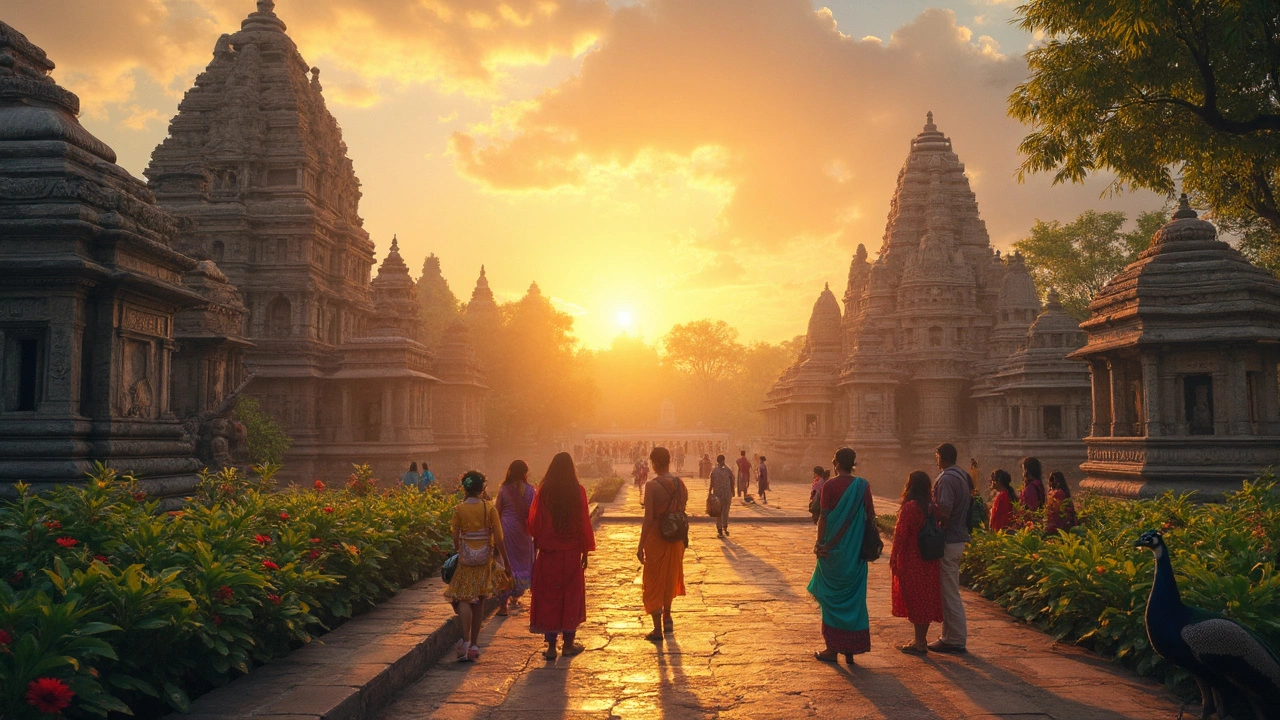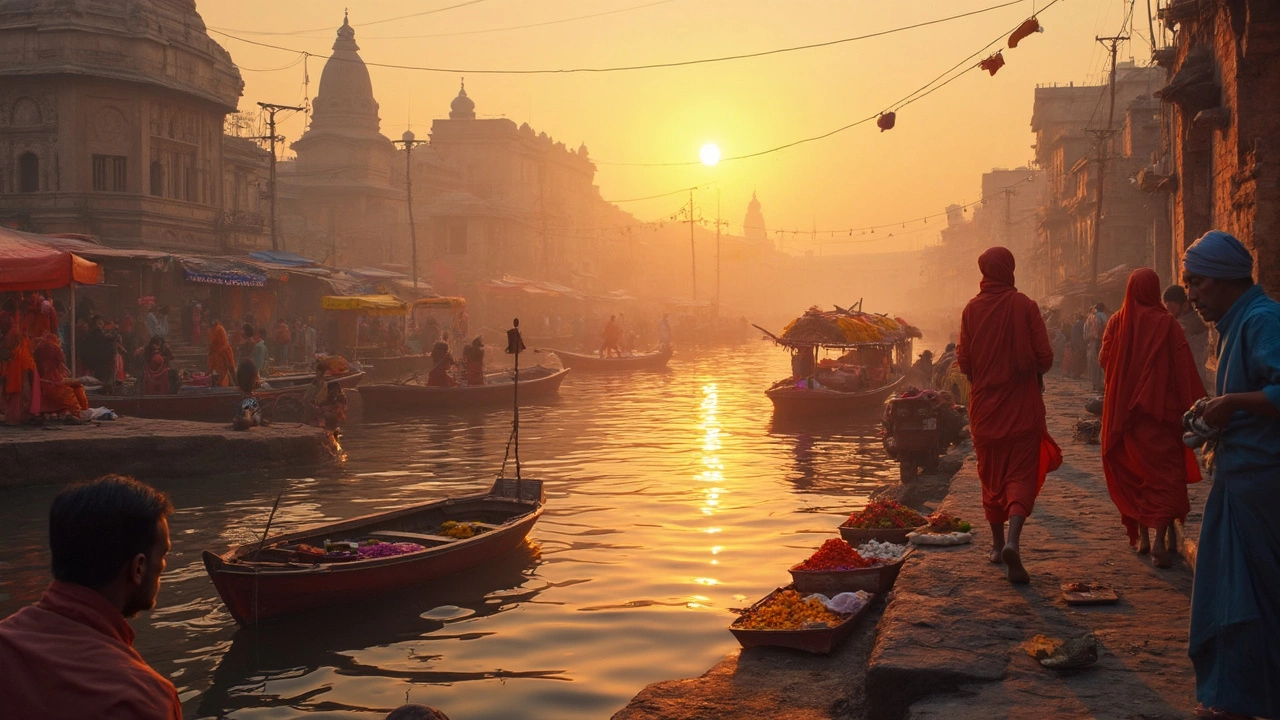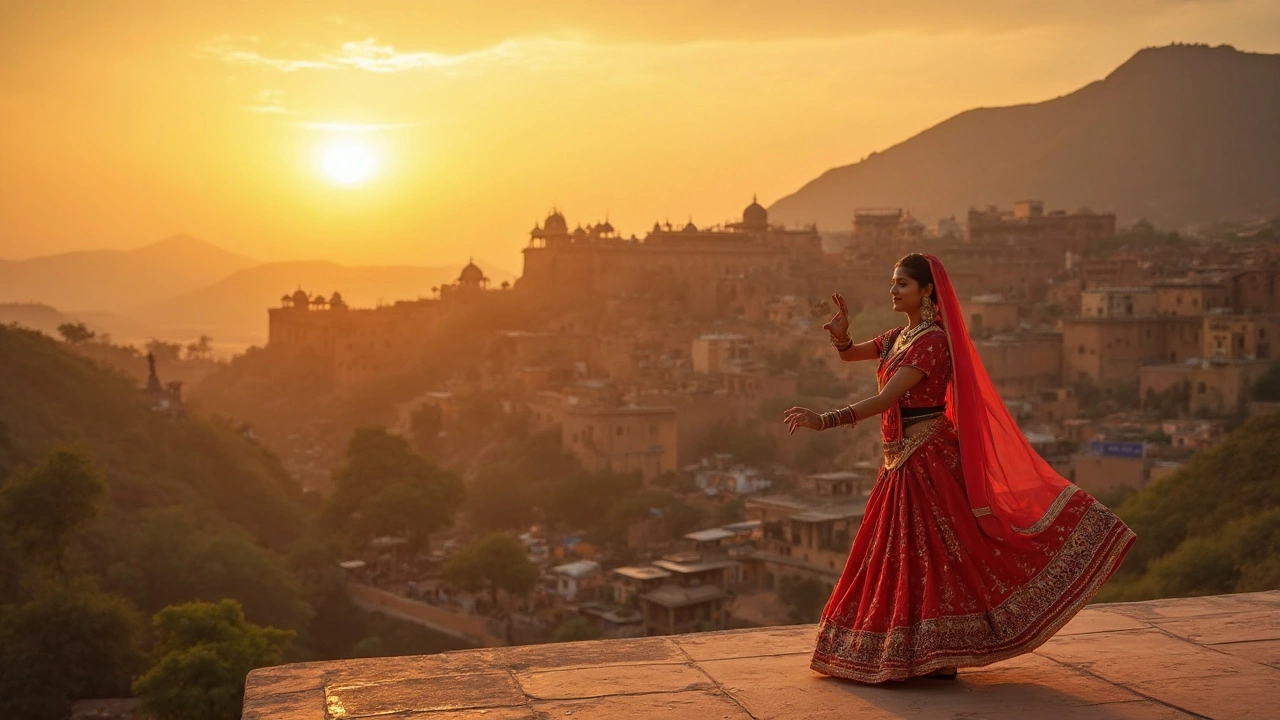Discover India's Newest UNESCO World Heritage Gem
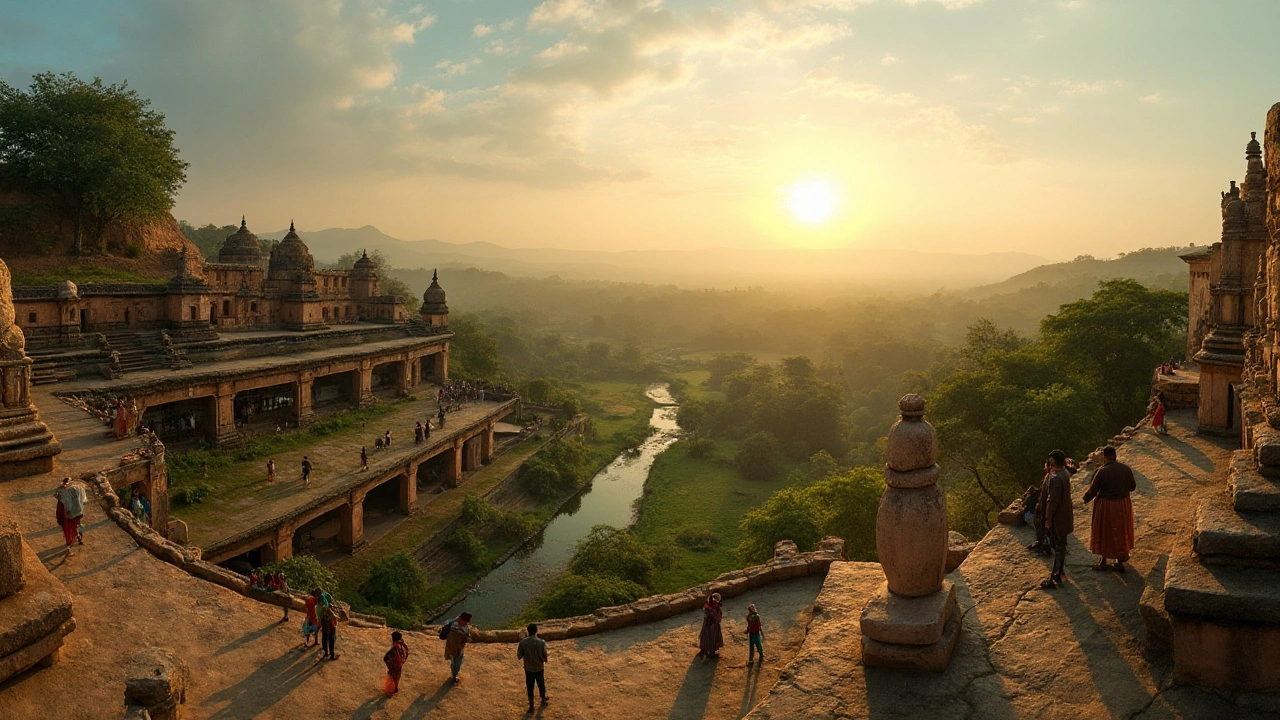
It has been a noteworthy year for India as it proudly unveils its latest addition to the UNESCO World Heritage family. This new site is a testament to the country's deep-rooted history and diverse culture, offering a fresh lens through which to explore India's mesmerizing landscapes and stories.
India's newest UNESCO World Heritage Site is not just a landmark; it is a celebration of cultural significance and historical excellence. As we embark on this journey to discover what makes this site exceptional, we delve into its fascinating background and the essential role it plays in India's cultural tapestry.
- Introduction to India's New Heritage Jewel
- Understanding UNESCO World Heritage Sites
- Importance and Impact on Local Culture
- A Closer Look at What to See
- Tips for Visiting the Site
- Broader Implications for India's Heritage
Introduction to India's New Heritage Jewel
Nestled in the heart of India, the new UNESCO World Heritage Site is a marvel, resonating with stories of the past and echoes of cultural vibrancy. In 2025, the site received its rightful place among the world's heritage jewels, further underscoring India's position as a wellspring of culture and history. This site, known for its exceptional architectural grandeur, cultural rituals, and significant historical narratives, provides a glimpse into a civilization that shaped the destiny of a region.
For centuries, this location remained a revered ground, where traditions were not just preserved but celebrated with an unmatched fervor. The intricate craftsmanship seen in the site's edifices is a testament to the expertise and dedication of the artisans from bygone eras. It's not just about majestic structures; the site is alive with stories told through art, carvings, and long-standing customs. One edifice, in particular, stands out for its breathtaking embellishments, that took over a decade to complete, showcasing the dedication and skill of the craftsmen.
"The site is more than just an ancient monument; it's a living narrative that connects us to our ancestors," remarked Dr. Arvind Sharma, a noted historian specializing in Indian architectural heritage.
This latest addition to the World Heritage list also serves as a focal point for cultural synthesis, where practices from different regions blended seamlessly, producing a unique tapestry of art, language, and belief systems. The site reflects a harmonious coexistence of different cultures, evident in the ruins that reveal influences from far beyond India's borders. Travelers and scholars alike are drawn to its eloquent tales of communal harmony and cultural exchange.
Visitors can witness firsthand the ancient ceremonial practices that are still performed to this day, preserving the intangible heritage that lines the corridors of this historical treasure. Preservation efforts have been a herculean task, with experts focusing on sensitive restorative techniques that respect the authenticity of materials and craftsmanship. As a beacon of cultural heritage, it welcomes thousands eager to explore its multifaceted layers, providing them with a profound sense of connection to India's rich past.
Understanding UNESCO World Heritage Sites
The idea behind UNESCO World Heritage Sites is to protect and preserve cultural and natural heritage around the world considered to be of outstanding value to humanity. These sites serve as a bridge linking the past and the present, offering insight into human civilization and the natural world. The concept was born out of an international agreement adopted in 1972, known as the World Heritage Convention, aiming to safeguard significant historical, cultural, and natural areas for future generations. Having a site designated as a UNESCO World Heritage site not only recognizes its exceptional universal value but also aids in its preservation.
For a location to gain the esteemed title of a UNESCO World Heritage Site, it must meet at least one of ten selection criteria. These criteria encompass a range of attributes such as outstanding universal value, possessing cultural traditions, extraordinary examples of architecture, or being an outstanding example of a traditional human settlement. By fulfilling these criteria, a site provides a narrative of human history and natural phenomena. The selection process is thorough and requires meticulous documentation, evidencing the need and commitment to preserving a site. This ensures that the sites listed on the World Heritage List maintain a standard of quality and authenticity that aligns with global expectations.
The benefits of acquiring UNESCO status are significant. They go beyond mere prestige. It often leads to increased global recognition, boosting tourism which can greatly contribute to the local economy. That tourism interest demands a thoughtful, sustainable approach to ensure the protection of the site's unique features while also allowing visitors to experience its wonder. Recognition also invites international cooperation and provides access to funds from the World Heritage Fund to assist in conservation efforts. These aspects highlight how a UNESCO listing is not just an accolade but a commitment to sustain and nurture heritage.
Beyond just tangible advantages, these sites often become symbols of national pride and identity. They foster a sense of community and encourage cultural exchanges. At times, they even represent peaceful trans-border collaborations. Among the many examples, the shared efforts between several countries to conserve the natural beauty of the Great Barrier Reef or the joint management of cultural sites like the Temple of Preah Vihear on the Cambodia-Thailand border stand out. These collaborations underscore how such sites can be more than the sum of their parts, enabling dialogues between cultures and nations.
Just as important are the educational and research opportunities that arise from World Heritage status. Sites often spur academic studies, offering unique insights into human history and environmental science. Such research eventually contributes to our understanding of how ancient civilizations lived or how ecosystems functioned before the modern intrusion. Schools and universities frequently align projects with these sites, making them living classrooms and laboratories that significantly enhance learning.
"UNESCO has always considered culture as a vector of dialogue between peoples. The cultural diversity represented in the list of World Heritage properties is crucial for promoting tolerance and mutual understanding." - UNESCO Official
Protecting world heritage is not just a responsibility of the countries where these treasures rest; it is a duty globally recognized by everyone. The World Heritage emblem brings a worldwide commitment together and encourages global communities to collaborate, ensuring diverse voices contribute to the conservation dialogue. This cooperative spirit is at the heart of UNESCO's mission, aiming to protect our world's treasures as a common shared heritage.
Ultimately, understanding UNESCO World Heritage Sites is about recognizing their role in connecting us to the past, shaping our present, and inspiring future generations. They are a part of our cultural DNA and an important reminder of the diversity and beauty of our planet. As new sites get added, like the intriguing addition from India, they add new stories, perspectives, and opportunities for us to engage with the profound legacy of our world. Each site on the list invites people to explore and appreciate the diverse tapestries that make up our shared human history.
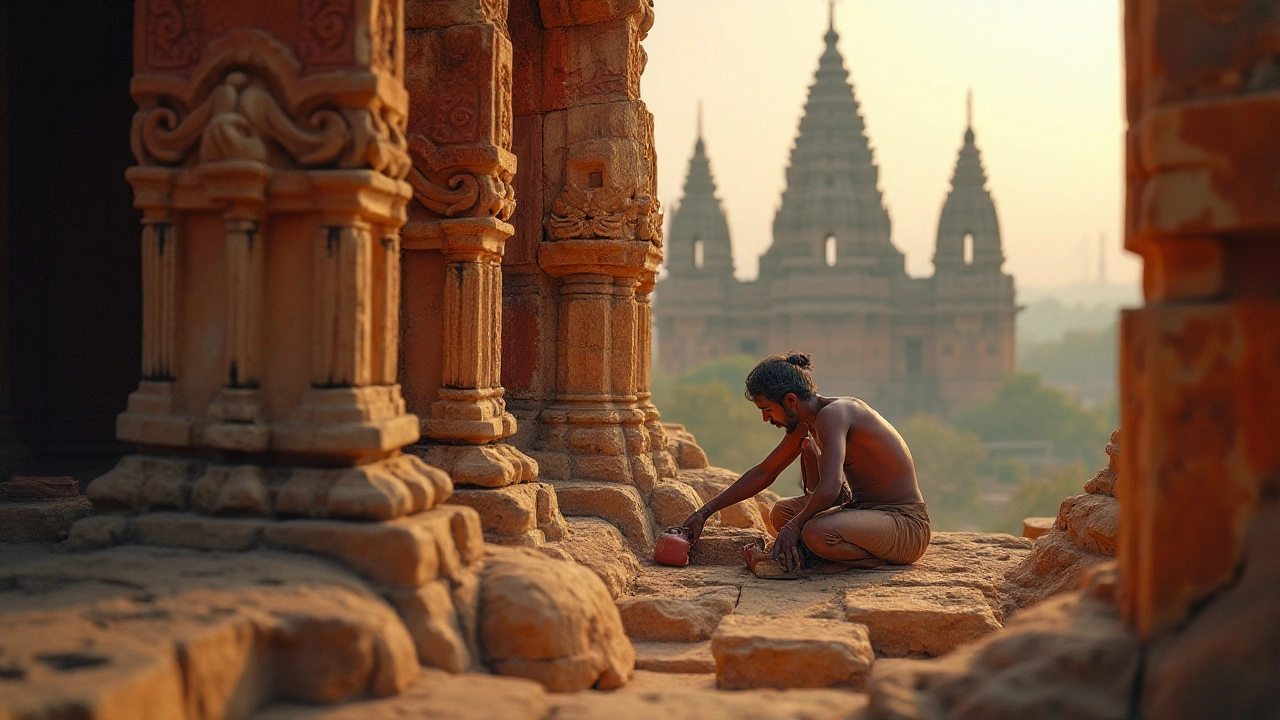
Importance and Impact on Local Culture
The designation of a site as a UNESCO World Heritage Site holds profound implications for the local culture, boosting community pride and economic opportunities. This recent recognition serves as an acknowledgment of the area's historical significance, ensuring that the traditions and way of life are preserved for future generations. By placing a global spotlight on the site, UNESCO not only encourages tourism but also inspires a renewed interest among locals in their own cultural heritage.
Engagement with the newly honored World Heritage Site often leads to a deeper community involvement in the preservation of local traditions. The influx of visitors from across the globe fosters an enriching cultural exchange, where residents proudly share their customs, cuisine, and crafts, thus revitalizing these practices. The community's youth, who might have previously looked to urban locales for opportunities, find renewed purpose and potential careers related to heritage conservation and tourism, ensuring the continuity of cultural practices.
Moreover, the economic impact is significant, with the site attracting cultural tourism which inherently promotes local businesses, from artisans to hospitality sectors. The ripple effect of this economic activity can be transformative, encouraging infrastructure development and business opportunities aimed at enhancing visitor experiences without compromising the integrity of the heritage site. The increased demand for local goods and services not only boosts the region's economy but also raises living standards, encouraging further investment in cultural projects.
As articulated by Irina Bokova, former UNESCO Director-General, "World Heritage sites are the symbols of a new humanism - bringing people together and promoting a culture of peace and dialogue among civilizations." This encapsulates the potential of heritage sites in bridging the gap between the past and the present and fostering unity.
This World Heritage recognition serves as a pivotal educational tool, highlighting the importance of cultural and historical literacy. Educational programs centered around the site can be developed, engaging schools and universities in the region to enrich their curricula with the vivid stories, artistic achievements, and historical contexts associated with the site. These programs ensure that the exploration of heritage becomes an accessible and integral facet of learning for all, promoting global citizenship and deeper empathy.
Finally, the environmental benefits tied to the recognition cannot be understated. Many heritage sites hold natural wonders alongside cultural achievements, promoting environmental awareness and conservation efforts. This site’s elevation to a UNESCO status often acts as a catalyst in fostering sustainable tourism practices, ensuring that preservation efforts successfully guard both the cultural and ecological tapestry of the region. With strategies geared towards minimizing environmental footprint, the site not only serves as a cultural beacon but also as a model for sustainable development.
A Closer Look at What to See
As you stand before this magnificent addition to India's list of UNESCO World Heritage Sites, you are immediately struck by the sheer brilliance of its architectural splendor. This site is not merely a collection of buildings or landscapes but a living testament to intricate craftsmanship and rich history. Each structure tells a unique story, woven into the very essence of India's cultural tapestry. The site's visual aesthetics are captivating and promise an enthralling journey through time.
The primary focus of this site is its central monument, an exquisite masterpiece that stands tall and proud, each detail a snippet of history immortalized in stone. Visitors can marvel at the painstakingly carved sculptures that reflect India's age-old traditions and artistry. From afar, the silhouette of this monument against the skyline presents a breathtaking view, but a closer inspection reveals the mastery involved in its creation. With every corner revealing a new aspect of cultural heritage, there's a chance to appreciate the blend of various art forms that have shaped its existence.
A noted historian once remarked, "This site is a window into India's soul, where the past whispers its tales to the present." This quote encapsulates the site's essence, drawing connections between history and modernity.
Among the many highlights, the site's gardens offer a serene escape. The lush green spaces are meticulously maintained and serve as a reminder of the harmony that exists between human creations and nature. The landscaped gardens encourage visitors to take a moment of reflection and absorb the tranquil ambiance. Moreover, an array of pathways invites you to explore every corner, letting you uncover hidden art forms and patterns that are both intricate and symbolic.
For those intrigued by historical narratives, the site features an informative exhibition space. Here, you can delve into ancient texts, photographs, and artifacts, gaining a deeper understanding of the site's significance and the cultural context from which it arose. The exhibition presents stories of ancient civilizations, trade routes, and cultural exchanges that played a crucial role in shaping the region's identity. With digital displays and interactive setups, the historical information is accessible and engaging, making it suitable for all ages.
Architectural Marvels
A tour of the heritage site wouldn't be complete without acknowledging the stunning architectural marvels. Each piece of architecture within this site highlights a unique style that has been influenced by several dynasties that ruled the region over centuries. Each dynasty left its mark, creating a fascinating mosaic of design elements that journey from one era to another seamlessly. As you explore, you'll notice the symmetry and precision in structures that convey the remarkable skills of ancient masons and artisans. India's architectural evolution is encapsulated within these confines, offering a panoramic view of design philosophies that have transcended generations.

Tips for Visiting the Site
Embarking on a journey to explore India's latest UNESCO World Heritage Site is a captivating experience filled with insights into the country's rich tapestry of history and culture. To make the most of this trip, it’s essential to come prepared with knowledge and a traveler’s toolkit. Start by researching the cultural and historical significance of the site. This will not only enhance your appreciation but also guide you in engaging with local stories and narratives that bring the site to life. As you navigate the area, consider hiring a local guide who can offer a deeper understanding and share anecdotes steeped in the area’s history, typically passed down through generations.
Getting to the site is part of the adventure, and there are a few travel options depending on your starting point. Public transportation is an affordable and eco-friendly choice; however, hiring a private vehicle can offer flexibility and comfort. Be sure to plan your visit during the cooler months if possible, as the temperature can vary significantly. Once on site, you'll want to capture the memories, so a good camera is a must. Ensure your batteries are fully charged, and carry extras alongside a journal to note down interesting tidbits you encounter.
Respect is paramount when visiting a cultural landmark. Dress modestly, keeping in mind local customs and traditions. Some areas may require specific attire, especially if there are religious elements, so it's wise to inquire in advance. Many travelers find the experience of interacting with the local community enriching; purchasing souvenirs directly from indigenous artisans or vendors supports the local economy and preserves artistry passed through generations. Dr. Anita Desai, a respected historian, once noted,
Visiting heritage sites is not just about viewing relics of the past, but understanding their role in shaping today’s societal values.Her words remind us of the broader significance of such journeys.
For the tech-savvy, there are apps that offer audio tours and detailed maps, allowing you to dive deeper into the site’s narratives. Ensure your phone is set up for offline access, as connectivity might be limited in some regions. Local cuisine is often a highlight of any visit; relishing traditional dishes will leave you with flavorful memories. Keep an eye out for eateries that follow authentic recipes and offer a genuine taste of the locale. If you are mindful of dietary preferences, it’s best to communicate them clearly to restaurant staff.
Finally, don't rush your visit. Set aside ample time to explore every nook and cranny. Remember, visiting a World Heritage Site isn’t just an excursion; it’s an opportunity to immerse yourself in the essence of a culture that has been recognized globally. Each path walked and every story heard adds to the mosaic of your journey, leaving you with a deeper connection to one of India's many treasures. Whether you are a history buff, a culture enthusiast, or simply a curious traveler, these tips will ensure your visit is as fulfilling as the stories that echo across the site.
Broader Implications for India's Heritage
The designation of a site as a UNESCO World Heritage Site carries with it an array of profound implications for India's heritage landscape. It serves as a striking acknowledgment of the site's universal value, enhancing both national pride and international recognition. This new addition is not just a feather in India's historic cap, but a bold stroke on the global cultural canvas, underscoring the country's rich tapestry of civilization and nature. Such recognition often brings to light lesser-known aspects of India's history and diverse cultural influences, inviting scholars and history enthusiasts from across the globe to delve deeper into the country's storied past. The ripple effect can be seen not just in heightened tourism and economic benefits for local communities, but also in the enriched global discourse around India's cultural storytelling.
Another interesting facet is the increased focus on preservation. With the spotlight that comes with the UNESCO title, there is not only celebratory acknowledgment but also a responsibility to protect and maintain these sites with renewed vigor. This international affirmation often catalyzes local and national efforts to safeguard the site, leading to more specialized conservation techniques and funding. Additionally, it encourages community involvement, fostering a sense of ownership among locals, who become stewards of their cultural and natural heritage. As
Fiona Reynolds, a conservation expert, once highlighted, "World Heritage status is more than just an accolade; it's a catalyst that engenders a community's commitment to safeguarding history for future generations."This empowerment helps in building broader awareness and action plans that align with sustainable development goals, ensuring that these treasures continue to captivate people for generations.
Adding to that, the new heritage status can inspire educational initiatives, encouraging academic institutions to expand curricula that explore the nuances of India's cultural and historical journeys. By integrating advanced technologies like virtual reality and artificial intelligence, educators can innovate ways to bring these historical narratives to life, making learning an immersive experience. As a result, a new generation of learners becomes deeply connected with their roots, fostering a vibrant dialogue between the past and the future. Such educational endeavors can also introduce interdisciplinary approaches, marrying history with science, technology, and art to create a holistic cultural education framework. These initiatives not only enrich the educational landscape but also build a collective consciousness that champions cultural preservation as a shared global responsibility.
